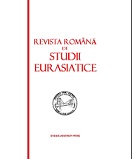THE POLISH-AUSTRIAN RIVALRY FOR THE ROMANIAN COUNTRIES SUZERAINTY (1685-1686)
THE POLISH-AUSTRIAN RIVALRY FOR THE ROMANIAN COUNTRIES SUZERAINTY (1685-1686)
Author(s): Daniel FlautSubject(s): History
Published by: Ovidius University Press
Keywords: House of Austria; Poland; Transylvania; Wallachia; Moldavia; Mihail Apafi, Serban Cantacuzino; Constantin Cantemir; Hallerian Treaty.
Summary/Abstract: In 17th century, Vienna, Warsaw and Moscow represented the fundamental nuclei of Central and Eastern Europe, around which defensive and offensive political systems were created, and, sometimes, certain agreements were reached to, such as the one that generated the foundation of the Holy League. The battle for Vienna had a general political implication; the detachments of the Romanian Countries also fought in this battle. All that followed until January 1699, at Karlowitz, only proved that, in the middle Danube area, unique events were taking place. The Ottoman Empire was gradually losing half of its European territories, and it was heading towards an imminent collapse. The present study present the rivalry between Poland and the House of Austria over the control of the Romanian territory, during 1685-1686; in this matter, the Habsburgs were successful due to the Hallerian Treaty. We also stop over the Polish-Russian connections that were forthcoming for the perpetual peace (1686), which proved to be ill-fated for Poland; this event represented the reason why Poland enterprised some campaigns in 1685 and 1686, which, unfortunately, were unsuccessful. We analyze, simultaneously, the diplomatic efforts paid by the Romanian rulers, who were in the middle of these rivalries.
Journal: Revista Română de Studii Eurasiatice
- Issue Year: 7/2011
- Issue No: 1+2
- Page Range: 63-84
- Page Count: 22
- Language: English

